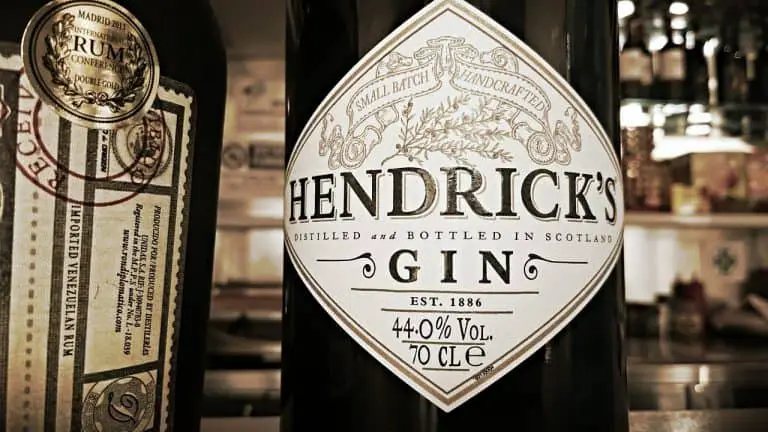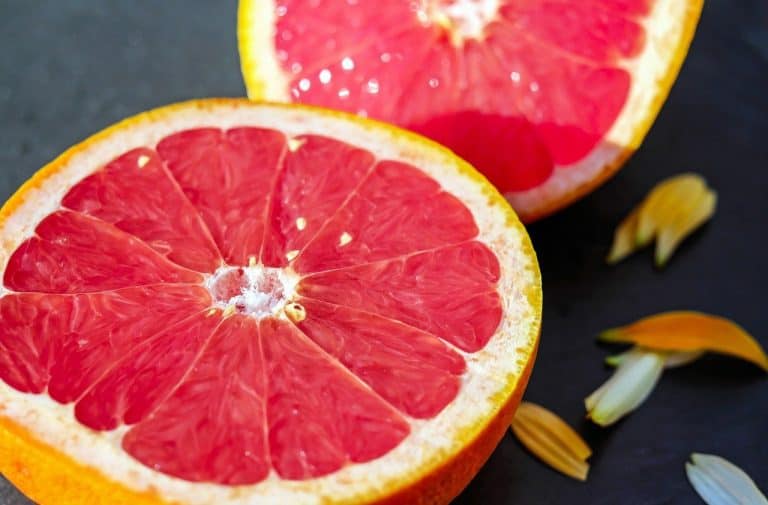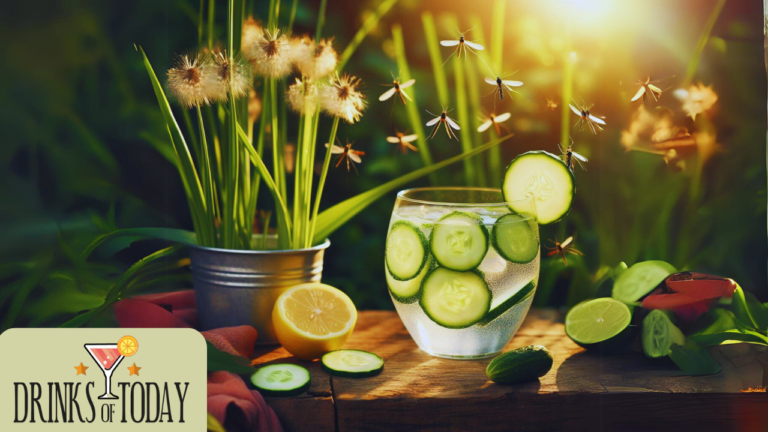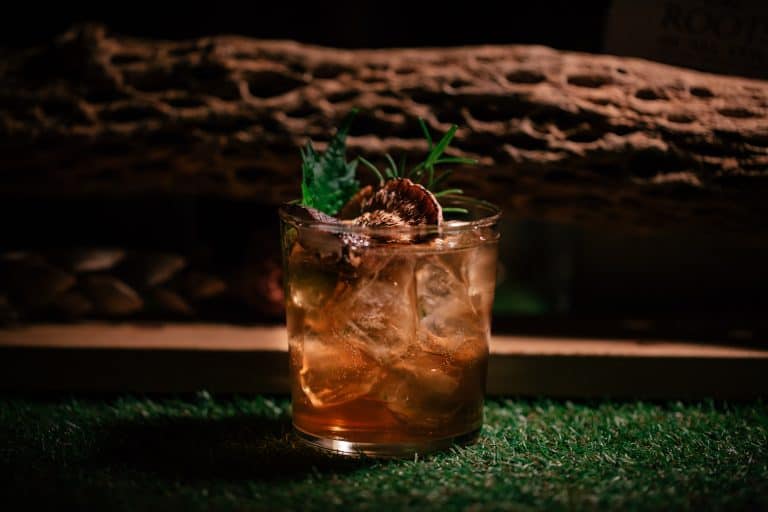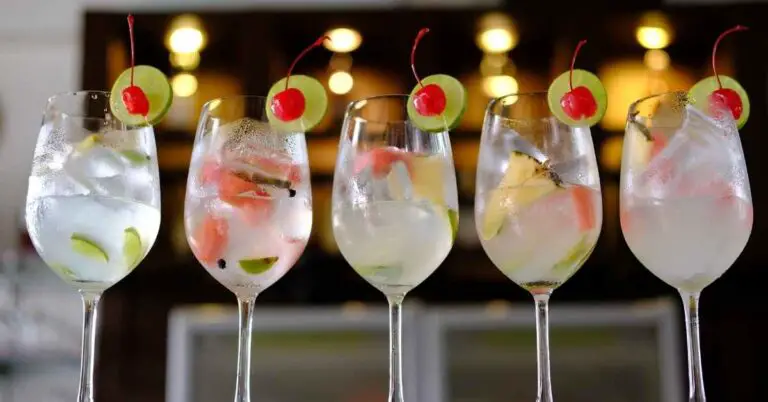What Is London Dry Gin? History & Unique Flavor Explained
If you’ve ever spent any time browsing your local liquor store, you’ve probably seen the phrase “London Dry” proudly displayed on a number of gin labels.
If you have no idea what it means, you’re definitely not alone. London Dry gin is a pretty specific concept, even if it seems like it’s everywhere these days.
A London Dry Gin is a gin distilled to a minimum of 37.5% ABV with no added sweeteners. Furthermore, a London Dry Gin used to only classify a gin as such when it was distilled in London. Nowadays, this rule is gone.
In this article, we’ll explore some of these guidelines further, as well as the origin of London Dry Gin and how it’s commonly used.
So What Is London Dry Gin Exactly?
To put it as simply as possible, London Dry gin is defined as a gin that is redistilled to an ABV (Alcohol by Volume) of at least 70% (after being originally distilled at over 96% ABV.)
After that, it can only be watered down to a minimum of 37.5% ABV and cannot have any artificial ingredients or color added after the fact. It is also only allowed to add a very minimal amount of sweetener.
Because of these stringent rules, the taste of a London Dry Gin is primarily that of the juniper berries from which the spirit is made.
Now, while this description technically answers the question, you may still be confused as to what this all means for someone who is not as involved or knowledgeable in the world of alcohol production.
Let’s dive a bit further into the definition and other aspects of London Dry gin.
Breaking Down The Definition Of London Dry Gin
Looking at the definition of what makes a certain gin a London Dry can seem a bit complicated and overwhelming. We’ll look at these guidelines a little deeper and bring clarity into what this exactly means for the beverage.
The basic idea of a London Dry Gin is that it enhances the natural flavors present in gin, which is the botanicals the spirit is made from. These include juniper, as mentioned, but can also include angelica, citrus, and other various botanicals.
Think of this as a process designation in that it refers to guidelines that need to be followed during the initial production steps of distillation.
Because there are strict rules about the ABV amounts after distillation and redistillation, this protects the natural taste of the beverage. It also means that there is a standard that can be relied upon in terms of ABV when purchasing a London Dry Gin.
You can rely on at minimum a 37.5% ABV no matter what brand of London Dry Gin you are trying.
Further, the definition is very specific in mentioning that artificial flavors or colorings are not to be added to a London Dry Gin. Again, this is to ensure that the natural botanicals of the spirit are able to be dominant in the taste.
It basically means that gin is guaranteed to be enjoyed just as nature intended, which is exactly how many gin lovers like it.
A London Dry Gin is able to have just the tiniest amount of sweetener added. To be exact, the amount is no more than 0.1 grams of sweetening products per liter. This is, again, because any sweetness from the beverage is intended to come from natural botanicals.
As a final note when discussing this definition, it’s important to be aware that a London Dry gin is not exclusively crafted in London. This is a common misconception, but there is no geographic specificity to this spirit.
History Behind London Dry Gin
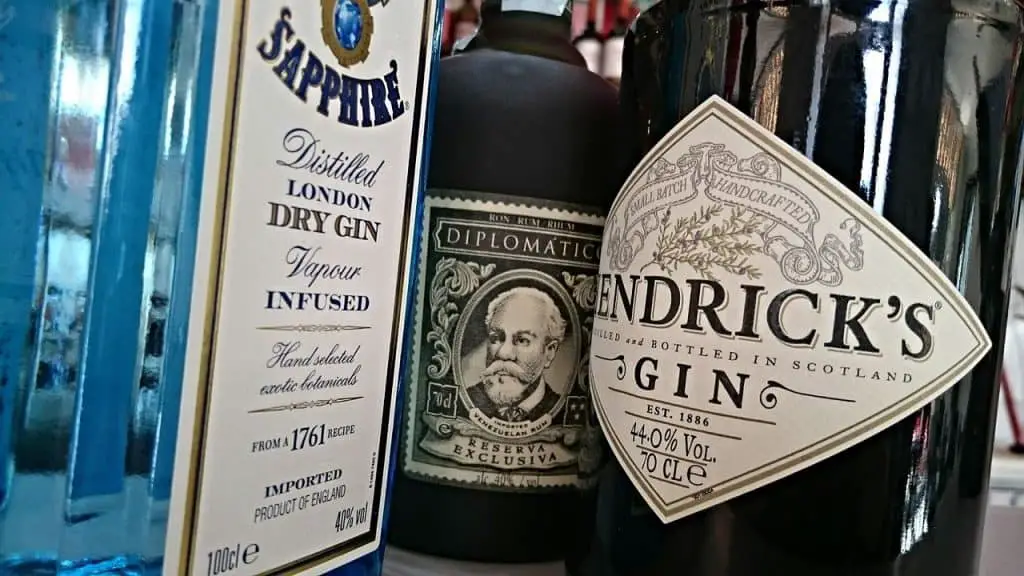
You may be curious as to where these specifications came from, or even why there’s a need for such strict specifications at all. It may seem a bit over the top, but when you learn some of this beverage’s history, it starts to make a little more sense.
The rules and definition surrounding the crafting of a London Dry Gin came about after what is considered the “Gin Craze” in London in the late 1600s. It came about because of two policy changes enacted by William II.
The first was a heavy tax on French wine and cognac, which lessened their popularity in England.
The second was new laws that offered tax breaks on spirits production. The result was that anyone and everyone began distilling their own spirits, making gin an incredibly cheap and popular beverage.
It doesn’t sound too bad at all, but there were certain problems that came about in the wake of this. Because it was so cheap, people in England were drinking gin like water.
Beyond the obvious social issues of a drunkard society, it was also nearly impossible to regulate what was actually in these beverages.
It was not entirely uncommon to discover that some gins had ingredients such as sawdust, turpentine, and sulphuric acid. Not exactly the most ideal for consumption!
The solution that was decided upon was to require distillers to have (and pay for) a distiller’s license, which was a high cost for many during this time period. This minimized the number of distillers crafting the spirit.
This also allowed there to be more regulation about what actually is involved in the production of the gin itself.
In the mid-1800s, London Dry Gin was incredibly popular, leading to the distinction between the neutral spirit dry gin and any other types of gin that are crafted.
London Dry Gin is a direct result of the Gin Craze as it represents a beverage that is highly regulated and formulated in a simple and pure way. Gin lovers appreciate that it is a consistent and reliable spirit that doesn’t ever lose the authenticity of the botanical flavor.
What A London Dry Gin Tastes Like
For some, just hearing a description of the flavor of botanicals is not enough. If you’ve never tried gin, it might be hard to imagine the actual taste of the spirit or if it might be something you enjoy.
As mentioned, the point of a London Dry Gin is to highlight and emphasize the natural botanicals that are in the spirit. The most prominent is the juniper berry, which has a slightly piney feel to it. It’s fresh and can sometimes evoke memories of taking a wintery walk through the forest.
You may also get slight notes and flavors of citrus when sipping on a London Dry Gin, although usually, it is less pronounced than the juniper flavor. The finish is described as having a root flavor, but again, this is somewhat subtle.
The juniper taste of a London Dry Gin is definitely the most pronounced and noticeable.
How A London Dry Gin Is Used

All of this information is well and good, but it does you no good if you don’t know how you should be consuming a London Dry Gin. Let’s take a look at some of the most popular ways this spirit is used and enjoyed.
Before we get into the many ways you can drink a London Dry Gin, let’s look at some of the most popular types. As mentioned, you can find a London Dry Gin pretty much anywhere, but there are certain brands that are more popular or easier to find than others.
One of the most common choices is Bombay Sapphire, which is a great brand to try the beverage. It tastes very light and not too intense, and the floral aspects of the botanicals are very noticeable making the taste very popular.
Another popular and classic choice is Tanqueray. Live your sophisticated and elegant fantasy while sipping on this smooth and delicious gin, whether it is neat or in a cocktail. Tanqueray is versatile and consistent in flavor and consistency.
If you already know you like a London Dry Gin and would like some variety of flavors, Beefeater is a fantastic choice. It has all the standard qualities of a regular London Dry, but it also has a hint of spiciness that makes its flavor unique.
Gin And Tonic
This is pretty much the classic choice for a simple and widely liked cocktail. The gin and tonic is a perfect choice for drinking with London Dry Gin, and not just because it is easy to make and a widespread crowd-pleaser.
As mentioned, the appeal of a London Dry Gin is to appreciate and enhance its natural botanical flavors. Tonic has a subtle enough flavor that it will not overpower the gin’s natural taste.
It wouldn’t make sense to drink a London Dry Gin with Coke, for example, as it would overpower the entire taste of the gin.
However, the tonic will water down the spirit, which is perfect for someone who doesn’t want such a strong beverage. A Gin and Tonic is a great starter cocktail to attempt if you’re not sure if London Dry Gin is something you like.
Martini

Nothing quite says class and sophistication like sitting down in a swanky bar and ordering a Martini. Although there are many ways to order a Martini, the classic gin Martini is a great beverage to use your London Dry Gin for.
This is perfect for someone who wants to see the different ways that other ingredients can strengthen or change the natural flavors in a London Dry. For example, the garnish you choose for a Martini can change the cocktail’s flavor profile.
If you choose to make a Martini with a twist, the lemon peel will complement the already existing citrus notes in a London Dry, and you will have a refreshing and delicious beverage.
Drink It Neat
This may seem a bit scary, especially if you’ve never tried a London Dry Gin or if you’ve never drunk any spirit neat. However, this can be a great way to consume this spirit, as you will be able to truly appreciate the full and natural flavor profile of a London Dry Gin.
This can be something you work up to once you know you like the spirit in other beverages if you still have your doubts, but gin lovers everywhere recommend giving it a try in a nice cold glass. You can attempt to water it down slightly if you find the beverage too strong, as well.
Final Thoughts
Now that you understand the somewhat mysterious definition of a London Dry Gin, try some of these wonderful, classic beverages with some friends next time you’re looking to spice up a dinner party or a small get together.
A London Dry Gin is widely popular and is always a great choice to please a crowd with even the most diverse tastes.

